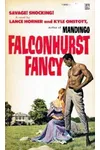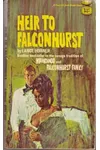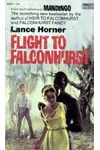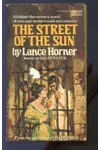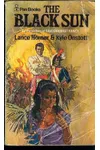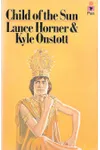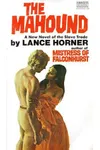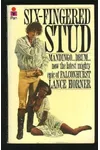Picture a storyteller who dared to peel back the romantic veil of the antebellum South, revealing its raw, unfiltered truths—meet Lance Horner! A bestselling historical romance author, Horner captivated readers with his provocative Falconhurst series, co-authored with Kyle Onstott. His novels, set on a sprawling Alabama slave plantation, blended sensational storytelling with unflinching depictions of slavery’s brutality, making him a polarizing yet influential figure in American literature.
Horner’s work wasn’t for the faint of heart. His vivid narratives tackled taboo topics like slave breeding and interracial relationships, offering a stark contrast to the rose-tinted plantation tales of the era. Let’s dive into the life, works, and lasting impact of this bold writer who reshaped historical romance.
The Making of Lance Horner
Lance Horner’s early life remains somewhat shrouded, as he was notoriously private. Before becoming a literary force, he worked in advertising, honing a knack for crafting compelling narratives. His writing career began with a single novel, The Street of the Sun (1956), but destiny called when he met Kyle Onstott, a fellow writer fascinated by the dark legends of the antebellum South. Their collaboration birthed the Falconhurst series, a gritty saga that would define Horner’s legacy.
Onstott’s tales of sadistic slave abuse and plantation life intrigued Horner, who brought his advertising flair to amplify the series’ dramatic allure. After Onstott’s death in 1966, Horner took the reins, steering Falconhurst into new, daring territories. His ability to weave authentic detail with shocking themes cemented his reputation as a boundary-pusher.
Lance Horner’s Unforgettable Stories
The Falconhurst series, Horner’s crowning achievement, spans 14 novels, with Horner co-authoring or solely writing several key entries. Set on the fictional Falconhurst plantation, the series explores the intertwined lives of slaves and slave-owners in pre- and post-Civil War Alabama. Unlike the idealized South of Gone with the Wind, Horner’s novels expose the era’s savagery, sexual perversity, and moral decay.
Key works include Falconhurst Fancy (1966), co-written with Onstott, which follows a slave bred for strength and the plantation’s tangled power dynamics. Flight to Falconhurst (1971) tells the gripping tale of Calico, a former slave passing as a white heir, navigating betrayal and danger. Heir to Falconhurst (1968) traces the plantation’s decline and resurrection through Drum Maxwell, a complex hero torn between his dual heritage. Mistress of Falconhurst (1973) delves into the fierce resolve of a woman upholding the plantation’s legacy amid chaos.
Horner’s style was erotic, violent, and unapologetic. His novels critiqued slavery’s immorality while indulging in lurid details, a duality that sparked both praise and controversy. Written during the civil rights movement, the series’ taboo-busting themes resonated with readers seeking raw, unfiltered historical fiction.
Why Lance Horner Matters
Lance Horner’s impact on historical romance lies in his fearless confrontation of slavery’s horrors. While some criticized his work as semi-pornographic, others lauded its bold departure from sanitized narratives. The Falconhurst series opened doors for discussing race, power, and sexuality in literature, influencing later authors tackling complex social issues. Its enduring popularity—evidenced by millions of readers and reprints—underscores its cultural weight.
Horner’s legacy is complex: a storyteller who entertained and provoked, he forced readers to grapple with America’s past. His novels remain a testament to the power of fiction to challenge norms and spark dialogue, ensuring his place in the literary canon.
- Born: Date unknown, kept private
- Key Works: Falconhurst series, The Street of the Sun
- Genre: Historical romance
- Notable Collaborator: Kyle Onstott
Ready to explore a world of passion, peril, and unflinching history? Snag Falconhurst Fancy or Flight to Falconhurst and dive into Lance Horner’s provocative saga!
